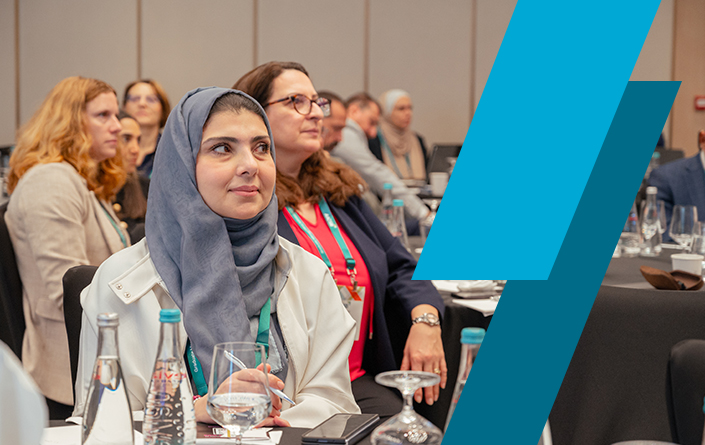Mapping ESG Content and the SDGs to PhD Programs
- National and international sustainability targets, such as the United Nations’ Sustainable Development Goals, provide benchmarks to help us achieve community transformation.
- Embedding environmental, social, and governance concerns and SDG content in educational programs remains an ongoing challenge for universities, given the need to address discipline-specific perspectives.
- By providing appropriate case studies that align with the SDGs, we can help our graduate students build their problem-solving capability.
Among the many challenges facing business schools today is how to appropriately embed environmental, social, and governance (ESG) content in their undergraduate and postgraduate programs. Achieving this goal is a critical component of helping communities and nations meet broader social and environmental goals, such as the Sustainable Development Goals proposed by the United Nations.
In fact, in its 2022 report on the SDGs, the U.N. highlights the “need (for) urgent action in order to rescue the SDGs and deliver meaningful progress for people and the planet by 2030.” As educators, we must do more than simply inform our communities. We also must help them build their problem-solving capacity and direct this capacity toward identifying and solving the problems the world now faces.
How can universities best accomplish this goal from a teaching perspective? What processes can we follow to facilitate ESG adoption and provide our communities with the skills necessary to meet the SDGs? One answer is relatively straightforward: We must reference ESG content and provide relevant examples in our courses. By providing unbiased information in these subject areas, we can inspire meaningful changes in human behavior.
But what more can we accomplish through research-based graduate education, where there is typically a significant theoretical and empirical component?
Here, the answer is more complicated and might require universities to reform the traditional discipline-based graduate programs they offer. For example, in the doctoral program at the College of Business and Law (CBL) at Australia’s Royal Melbourne Institute of Technology University (RMIT University), we take a three-step approach.
First, we align doctoral program content with relevant ESG and SDG criteria. Second, we carefully map ESG content to relevant SDGs and courses. Finally, we align specific ESG course content with discipline-specific interpretations.
Through this comprehensive approach, our objective is to educate students and scholars who will keep ESG and the SDGs in mind in their research and their teaching.
Mapping the SDGs to ESG
The 17 UN SDGs provide appropriate strategic benchmarks that schools can use to achieve social, environmental, and community transformation. As educators embed ESG content in their graduate programs, they can consider each SDG in terms of its underlying ESG components.
For example, for the environmental component, educators can incorporate case studies and other content related to issues such as sustainability in our built environments, access to fresh water and sanitation, creation of the infrastructure necessary to support and sustain communities, management and restoration of our land and water-based ecosystems, and the environmental challenges associated with climate change.
To address social concerns, schools can ensure access to inclusive, equitable, and lifelong education, while integrating content related to issues such as poverty alleviation, diversity, and access to healthcare.
To address social concerns, schools can ensure access to inclusive, equitable, and lifelong education, while integrating content related to issues such as food and energy security, poverty alleviation, diversity and gender equality, and access to education and healthcare. To address governance, faculty can include content related to individual and corporate responsibility, especially in terms of promoting policies and regulations that support sustainable production and resource consumption.
How can schools map these strategic benchmarks to doctoral education in business? We share our approach below.
Mapping ESG and SDGs to Doctoral Courses
In 2022, RMIT University undertook a significant reform of its doctoral programs that provide multidisciplinary training to individuals pursuing careers in business, technology, economics, and law. The program’s coursework translates current academic research at both theoretical and empirical levels in ways that link to ESG and the SDGs.
In the CBL, for example, our doctoral program now has five key courses. Each of these courses, described below, is designed to accommodate content related to ESG and societal impact and position students to produce high-quality research projects that have social and community impact:
- Research Philosophy and Design provides students with an understanding of ontology and epistemology and requires them to explore how these two areas of study inform discipline-specific intellectual traditions and research design.
- Research Methods and Impact provides insights into alternative research methodologies and impact frameworks necessary to study issues in business and law.
- Higher Degree Research Practice enables students to develop high-quality research project proposals, as well as to translate their work for, and engage with, multiple audiences as part of their research design.
- Applied Research Analytics helps students learn qualitative and quantitative data analytic techniques to effectively analyze, present, and interpret research data, while adhering to underlying assumptions and principles of ethics and integrity.
- Advanced Seminars in Global Business and Law Research (ASGBLR) provides an understanding of how business and law theories have solved global problems and realized benefits for society. This course helps students build SDG problem-solving capability, identify appropriate research problems, and establish a foundation for contributing knowledge at the doctoral level.
Let’s look at the design of ASGBLR, as just one example. The course comprises six seminars, each two weeks long, on the following topics:
- International capital flows.
- Insider trading and market manipulation in financial markets.
- The measurement of ESG criteria.
- The role of socially responsible investment.
- The relevance of portfolio diversification.
- The response of organizations and governments to climate change.
In the first week of each seminar, students complete reading assignments and analyze economic data linked to relevant international and domestic ESG content. This phase of the seminar is designed to help them understand theory, identify empirical context, and use relevant data. In the second week of each seminar, students apply that data to solving a unique research problem that is linked to key ESG criteria and relevant to their disciplinary perspectives.
All content and case studies for these topics address specific ESG criteria, while allowing for individual discipline interpretation. For example, in our seminar on international capital flows, we look at the impact of war on communities, including its effect on economic growth more broadly (SDG 8) and poverty in particular (SDG 1). For insider trading, we discuss the role of whistleblowers in over-the-counter markets, where securities laws often ignore whistleblower protections (SDG 16).
We look at the measurement of ESG criteria in the context of using smart technology and blockchain to determine the “greenness” of international bond or security issues that help finance infrastructure (SDG 9) and build sustainable cities and communities (SDG 11). As we explore the role of socially responsible investment, we also look at the legal and human rights implications of the trade of blood (or conflict) diamonds and the procurement of precious metals and stones (SDG 12).
The seminar on portfolio diversification presents issues related to the role of ESG stocks and cryptocurrencies in investment portfolios. Students examine how investments in both areas may facilitate the development of better energy (SDG 7) and other public infrastructure (SDG 6).
Finally, the seminar on climate change (SDG 13) looks at tourism’s wider impacts in the South Pacific. Case studies focus on programs that support agricultural and aquacultural development (SDG 2) while minimizing tourism’s impact on water (SDG 14) and land-based ecosystems (SDG 15). This seminar also addresses SDG 1 by exploring ways that tourism can alleviate poverty and hunger, support health and well-being, and promote economic growth in indigenous communities.
At every stage, we recognize that each student’s problem-solving perspective depends on a specific disciplinary focus, whether it’s finance, law, marketing, or another area. We expose students to perspectives from other disciplines through team-building exercises that are designed also to improve their communication, trust-building, and decision-making skills. For example, student teams might compete to build the best-performing asset portfolios comprising “sin” stocks versus “SDG” stocks, or they might work to find tourism destinations that best comply with SDG criteria.
Throughout these seminars, we facilitate discussions of critical developments in ESG at a national and international level. In these ways, we work to promote a holistic approach to learning.
Mapping ESG Criteria to Seminar Outcomes
Let’s now look at how we map ESG criteria to the topic of our first seminar, which investigates the impact of economic, financial, and political crisis on international capital flows.
In the first week, students discuss how capital flows are measured, what data is available, and what empirical and theoretical methods are used in existing studies. In the second week, students investigate the impact Russia’s war in the Ukraine is having on the global flow of capital.
Throughout the seminar, students are invited to map the war’s impact on ESG issues in a range of disciplines—including international law, international business, marketing, economics, and finance.
We want to raise students’ awareness of how issues negatively affect environments, ecosystems, individuals, communities, and societies, so they can work to devise solutions.
For instance, they might discuss how sanctions on capital movements affect the building of necessary infrastructure in remote and regional communities, or how the exit from Russian markets of multinational firms committed to diversity and equality might affect social progress in destination countries. Or, they might look at how the war has increased the cost of food and energy, which likely will increase global poverty and inequity.
By taking this systematic approach in our seminars, we hope to achieve several outcomes. First, doctoral students should learn to map and identify the link between observed facts (such as changes in international capital flow) and specific issues or problems (such as how to finance infrastructure development when foreign capital inflow decreases). They should learn methods to solve problems (such as statistical analysis or models) and arrive at specific solutions (such as channeling domestic savings, approaching the World Bank for financial support, or calling on governments to provide financial assistance to households).
What is most important is that students view every issue not only from economic, financial, management, or legal perspectives, but also in very real-world terms. We want to raise their awareness of how environments, ecosystems, individuals, communities, and societies are negatively affected, so they can work to devise solutions.
Embracing Program Reform
Those of us who teach at universities have a responsibility to improve the human condition through what we learn, what we teach, and how we build a base of knowledge. We are in positions to prepare individuals and organizations to solve problems identified by the SDGs.
To accomplish these goals, we might need to reform the coursework in our graduate programs. To truly develop students’ problem-solving capabilities in ways that address large global challenges, we must systematically map our course content to ESG and SDG criteria.






